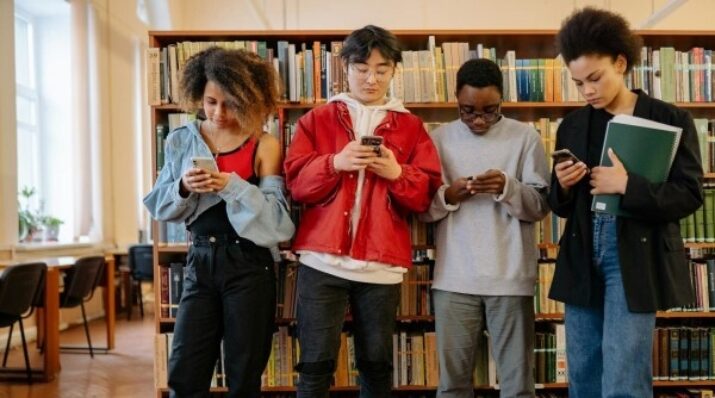5 Things to Consider When Considering Cell Phone Bans in Schools
Topics

Educators often take advantage of educational technologies as they make the shifts in instruction, teacher roles, and learning experiences that next gen learning requires. Technology should not lead the design of learning, but when educators use it to personalize and enrich learning, it has the potential to accelerate mastery of critical content and skills by all students.
Schools are banning cell phones more than ever after a recent Surgeon General report. We may want to ask ourselves if this really solves the problem or if it creates others.
Ever since the introduction of smartphones, schools have wrestled with how to manage them. We have had everything from policies to limit or control cell phone use all the way to incorporating phones as an educational technology tool.
But since the Surgeon General issued a new advisory last year about the effects of social media on youth mental health, school districts across the country are responding to the heightened concerns from parents, teachers, school staff, and even students. Los Angeles Unified, the nation’s second largest school district, just banned use of cellphones and social media by students. Other school districts had already taken this step or are in the process of doing the same. All school districts in California may soon be required to ban cell phones in classrooms as California’s Governor Gavin Newsom is pursuing a department of education statewide ban.
A few years ago, I attempted to address this issue with Students and Phones: Symbolizing The Battle Between Tradition and Transformation. But before I get into my response to the latest bans and approaches, I do want to acknowledge two things. One, I do think that student cell phone use does present classroom challenges for all educators in some ways (just like they do for all of us in many situations). Two, I completely agree that we should collectively be concerned about students’ mental health and the connection to social media and technology.
The question becomes how to respond. Here are five things to consider as schools pursue bans as a way to address this challenge.
1. Social-Emotional Learning/Skills
SEL is often misunderstood. It is really about core skills of Self-Awareness, Self-Management, Responsible Decision Making, Social Awareness, and Relationship Skills. Smartphone and social media use have demonstrated the need for these skills—not only in young people, but in all of us. These are often the skills that many educators say that our students are struggling with the most. There are many ways to teach these skills, but it seems like how to use our phones effectively, professionally, and ethically are relevant here.
2. Mental Health Concerns
Our students need to be aware of the potential challenges and impact that smartphones and social media can have on our mental health. It seems like we have an obligation to teach students about these concerns. Why shouldn’t every adolescent learn about the data related to Instagram and mental health in their peer group? Since students will continue to use their phones after school hours, bans will not address mental health issues that arise from their use outside of school. We have to teach them about that.
3. Dynamic, Relevant, and Engaging Classrooms
I am not saying this is easy, but our goal should be to create learning experiences for all students that engage them at a level where their phones become less interesting. I have walked into hundreds of classrooms where students were working on authentic work that was relevant to them and the world. In these environments, their phones become less interesting and less distracting. Conversely, I have been to hundreds of classrooms that would have every able-minded adult reaching for their phones out of sheer boredom. Like it or not, this is part of the problem and should be part of the solution.
4. Success of Bans
Do bans work? Historically, they often have not. Think Prohibition for example. Additionally, banning something often makes it more powerful. Take our nation’s experience with sex education and the focus on abstinence. Data from the NIH doesn’t support that teaching abstinence has been effective in lowering teen pregnancy. Bans seem like we are taking action, but they don’t seem like a sophisticated response to a complex challenge. Finally, how do bans fit in with creating collaborative, engaging, and inviting learning environments? Most of us would not like to work in an environment where we are banned from things.
5. Realistic, Practical Challenges
Anyone that has ever worked at a school can attest to how challenging it is to have any particular rule or policy followed consistently. Dress codes come to mind as an example. The more rules, policies, and protocols we have for students or educators, the less likely these will be implemented consistently.
There is no doubt that we have many challenges in terms of how to keep our students engaged and focused on learning, as well as keeping them safe and healthy. However, I think it’s worth continuing to question how we address these needs and challenges.
Currently, California school districts, as well as many more across the nation, are responding to the cell phone issue with bans. Ironically, across the nation, schools are dealing with things like declining enrollment, student attendance issues, and getting both our students and families engaged in school and learning. It seems possible that things like cell phone bans may exacerbate these issues. There is huge support from all stakeholders to address the cell phone challenges and many are fully on board with bans. But as an educator, I feel obligated to ask if we are trying to address a 21st-century challenge with a 20th-century mindset? Only time will tell, but my guess is that in a few years, we will be revisiting these bans and realize we still have not solved this problem or many others in our schools.
Photo at top by Yan Krukau.




